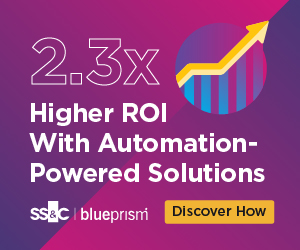
When Kelly Ducourty rejoined her former Google Cloud boss Rob Enslin at UiPath after Enslin assumed the co-CEO role there, she knew the go-to-market experience she amassed in her career would be instrumental in getting UiPath on the growth trajectory it wanted.
Ducourty, who applied the discipline she learned over two decades at Hewlett Packard and post-spin Hewlett-Packard Enterprise to the more freewheeling Google Cloud (alongside Enslin, taking it from $7 billion in sales to more than $30 billion in less than four years), felt there were similar opportunities at UiPath. In her first six months as UiPath’s Chief Customer Officer, she traveled extensively around the world learning the business and meeting with staff, customers and partners.
“I’m responsible for everything that makes the go-to-market tick,” Ducourty said during a recent interview with Automation Today. “And I think the beauty of this role is bringing together the customer strategy with the partner strategy. It’s super important for our future to make sure we’re going out to the market in an aligned way with customers’ best interests at heart, and without conflict or friction in the way we’re engaging with them.”
While bullish on UiPath’s growth potential, Ducourty recognized an opportunity to improve the relationship with partners.
Like other software companies, UiPath has a dual sales approach, leveraging both a partner network and its own professional services group for customers. Ducourty emphasized the need for a nuanced and strategic balance at UiPath and acknowledged an opportunity to better define where UiPath professional services engages directly with customers versus where partners engage.
The company places significant value on the expertise, market presence and relationships cultivated by its partners, effectively extending UiPath’s reach. Simultaneously, the professional services team plays a crucial role in the seamless introduction of new products, targeted account management and when intricate, customized solutions are essential. A strategic alignment ensures that UiPath maximizes the benefits of both partner collaboration and direct engagement, enhancing overall effectiveness in the market.
Feedback she heard from partners indicated they would appreciate a clarification on swim lanes as the lines between where partners play and where the professional services team is engaged are currently blurred. Ducourty agreed and, at a meeting attended by many UiPath partners at its annual Forward event in Las Vegas last October, signaled a change.
“We’re currently doing about 70 percent of our business with and through partners,” she explains. “And I made a promise to them [at Forward VI] that I’m going to try to drive that up to 95 percent.”
The professional services team, she says, will mainly be responsible for focusing on brand new products that might be unfamiliar to partners at the beginning.
“They’ll make sure that we put our implementation plans in place for those products with certain select customers so we have access to all of the learnings that emerge as new technology meets the real world,” she says. “And then when we’re ready, we can scale that to all of the partners. We also want to focus on partner-assurance services, where we can help partners be more successful, but still leave the vast majority of the implementation to them.”
On the customer side, Ducourty says there are several things she is working on to make their experience better. Overall, she says she has found customers to be happy with UiPath products and the results they are achieving.
One piece of valuable feedback she hears repeatedly, though, is they would like to see simpler pricing. Fortunately, she is able to respond to confused customers that changes are in the works. UiPath is in the process of reducing the number of SKUs they have from more than 100 down to less than 20.
Another priority for her is better transparency regarding changes.
“We have to make sure we are communicating ahead of time with customers, so they know what to expect,” Ducourty notes. “If customers understand what’s coming ahead of time, they can plan for those changes, adapt more quickly to new features, etc. The post-sales experience is also a focus for me. Making sure they know exactly who to engage with and how. Being proactive about engaging with them.”
In UiPath, Ducourty saw the promise that nearly everyone sees in AI-powered business process automation: in a business environment that demands increasing productivity, but that isn’t producing enough human talent, automation will fill the gap. UiPath continues to develop tools integrating the power of AI into its platform and Ducourty is ready to take that platform to the world.
If you liked this article, please sign up to Automation Today! Registrants will receive our free weekly newsletter updating you on the most recent developments in the Enterprise Automation, Intelligent Automation, Process Mining and AI space. In addition to news updates, we will also provide feature articles (like this one) with a more in-depth examination of issues for end users and their enterprises.


